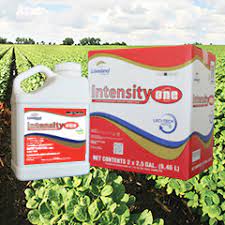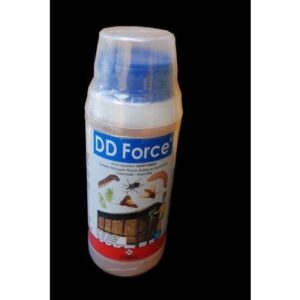Your cart is currently empty!

Single Product
INTENSITY POST-EMERGENCE GRASS HERBICIDE
INTENSITY POST-EMERGENCE GRASS HERBICIDE® is for use in controlling a wide variety of annual and perennial grasses in over 35 crops including soybeans, cotton, sunflowers, peanuts, sugar beets and alfalfa. INTENSITY POST-EMERGENCE GRASS HERBICIDE has a wide application window and has the flexibility to be tank mixed with most broadleaf herbicides and many insecticides.Intensity Post-Emergence Grass Herbicide…
Description
INTENSITY POST-EMERGENCE GRASS HERBICIDE® is for use in controlling a wide variety of annual and perennial grasses in over 35 crops including soybeans, cotton, sunflowers, peanuts, sugar beets and alfalfa. INTENSITY POST-EMERGENCE GRASS HERBICIDE has a wide application window and has the flexibility to be tank mixed with most broadleaf herbicides and many insecticides.Intensity Post-Emergence Grass Herbicide may be applied in cranberries at a rate of 6.0 to 8.0 fluid ounces
per acre.
Applications can be made any time grasses are actively growing, except within 30 days of harvest.
Applications made to cranberry plants at roughneck can cause abnormalities in flowers. This can be more
severe in certain varieties, such as Howes, and applications during this growth stage are not recommended.
Do not apply more than 8.0 fl oz/A (0.125 lb ai/A) per application.
Do not apply more than 32.0 fl oz/A (0.5 lb ai/A) per year.
Do not apply more than 4 applications per acre per year.
For repeat applications make on a minimum of 14-day interval.
The Preharvest Interval (PHI) is 30 days.
Add a nonionic surfactant (NIS) at a rate of 1.0 to 4.0 pints per acre.
ACTIVE INGREDIENTS
- Clethodim
ClethodimIntensity Post-Emergence Grass Herbicide may be applied in cranberries at a rate of 6.0 to 8.0 fluid ounces
per acre.
Add a nonionic surfactant (NIS) at a rate of 1.0 to 4.0 pints per acre.
Use Precautions
1. Apply this product only through irrigation systems including center pivot, lateral move, end tow,
side (wheel) roll, travelers, big gun, solid set, or hand move. Do not apply this product through
any other type of irrigation system.
2. Crop injury, lack of effectiveness, or illegal pesticide residues in the crop may result from
non-uniform distribution of treated water.
3. If you have any questions about calibration, you should contact your State Extension Service
Specialists, equipment manufacturers or other experts.
4. Do not connect an irrigation system (including greenhouse systems) used for pesticide
application to a public water system unless the label-prescribed safety devices for public water
supplies are in place.
5. A person knowledgeable of chemigation system and responsible for its operation or under
supervision of the responsible person, shall shut the system down and make necessary
adjustments should the need arise.
6. The system must contain a functional check valve, vacuum relief valve, and low pressure drain
appropriately located on the irrigation pipeline to prevent water source contamination from
backflow.
7. The pesticide injection pipeline must contain a functional, automatic, quick-closing check valve to
prevent the flow of fluid back toward the injection pump.
8. The pesticide injection pipeline must also contain a functional, normally closed
solenoid-operated valve located on the intake side of the injection pump and connected to the
system interlock to prevent fluid from being withdrawn from the supply tank when the irrigation
system is either automatically or manually shut down.
9. The system must contain functional interlocking controls to automatically shut off the pesticide
injection pump when the water pump motor stops.
10. The irrigation line or water pump must include a functional pressure switch which will stop the
water pump motor when the water pressure decreases to the point where pesticide distribution
is adversely affected.
11. Systems must use a metering pump, such as a positive displacement injection pump (e.g.
diaphragm pump) effectively designed and constructed of materials that are compatible with
pesticides and capable of being fitted with a system interlock.
12. Do not apply when wind speed favors drift beyond the area intended for treatment.
Additional information
| Weight | 1 kg |
|---|


